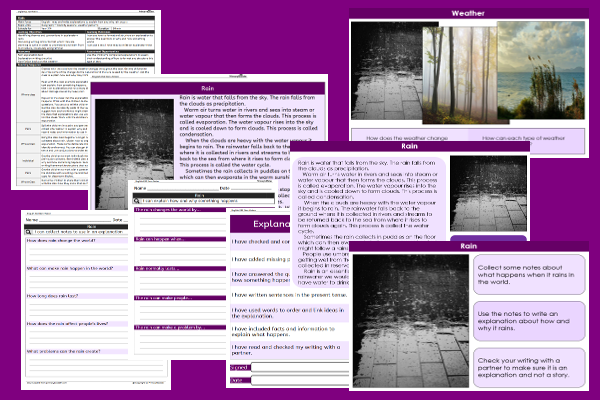Rain Facts

This English teaching pack for Key Stage Two gets the children to explore how to read and write explanations to explain how and why different forms of rain can occur in a range of locations around the world.
The class can research and collect facts and information about the impact of the rain on populations and landscapes to support their explanatory writing about something that happens.
Download this teaching pack including a lesson plan, classroom activities and an interactive presentation to teach the children to explore how to read and write explanations to explain how and why different forms of rain can occur in a range of locations around the world
Activities in this teaching pack include a shared reading text to describe how to structure and format an explanation about a type of weather that can affect the world, a worksheet to research and record notes and information as preparation for writing an explanation about a type of weather, a template to write an explanation to explain how and why rain occurs around the world and a worksheet to edit and make corrections to an explanatory text.
The interactive presentation gets the children to explore how to read and write explanations to explain how and why rain occurs around the world.
This lesson can support development in learning how to format and structure a explanation about how and why something happens. There are teaching activities for shared learning, differentiated worksheets to support independent learning and an interactive presentation to introduce concepts and key skills.
-

Maths Arithmetic Assessment
Assess abilities in solving arithmetic number problems for addition, subtraction, multiplication and division when working with informal and formal written calculations
-

Environment
Identify and describe some of the special landscapes and locations that can be found in the world and reflect on how they can be protected and preserved for the future
-

Silent Letter Words
Explore and illustrate the meanings and spellings of some different words with silent letters when using them in a range of topics and scenarios
-

Complaint Letters
Explain and model how to format and structure writing when composing letters of complaint about different issues and scenarios
